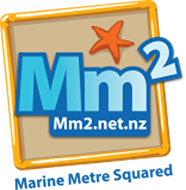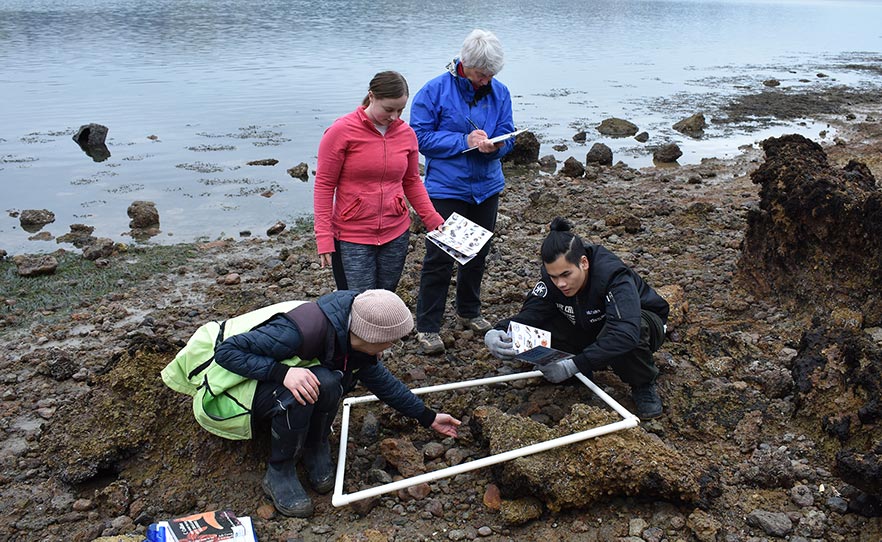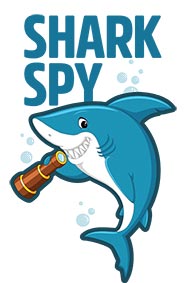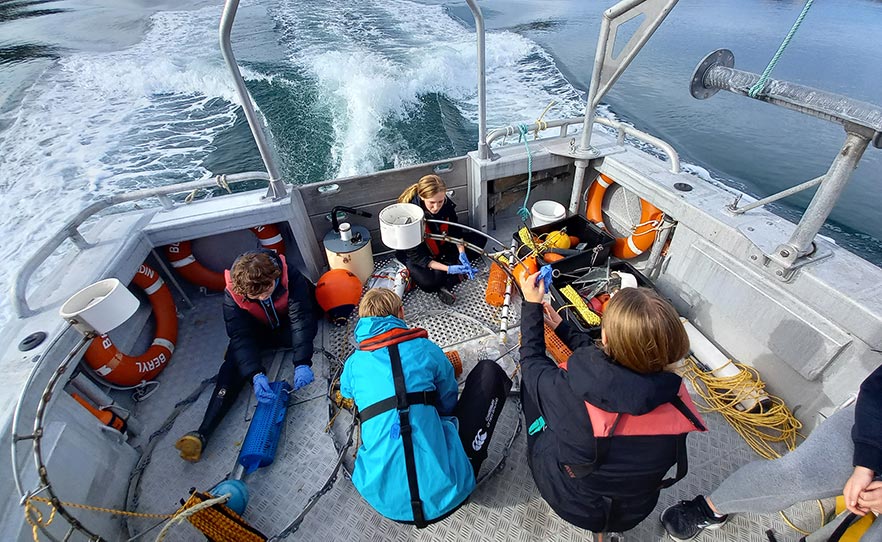 Marine Metre Squared
Marine Metre Squared
The NZ Marine Studies Centre is encouraging everyone to participate in long term monitoring of their marine environment – the Marine Metre Squared ( Mm2 ) project. Anyone can take part – individuals, families, schools and community groups.
Mm2 is an easy way for anyone to survey the plants and animals living on your local seashore.
On the Mm2 website you can find everything you need to get involved in this nationwide Citizen Science project, start surveying your local seashore, and find out where plants and animals that live between the tides are found around New Zealand.

As a registered member you can get full access to our online Mm2 database where you can add your own survey data to show others what's living between the tides on your local shore, and compare your shore with others in New Zealand to find out which species live where using our simple mapping and analysis tools. Registered members can also join our online community where you can connect with other members of the Mm2 network to get help with species identification.
Join the Marine Metre Squared project
 Shark Spy
Shark Spy
Sharks are crucial parts of marine food-webs. They keep the populations of their habitat controlled not only by consuming them, but also by modulating the feeding behaviour. Sharks are also simply impressive animals, whose ancestors have spanned back as far as 450 million years. To ensure the health of New Zealand's coastal ecosystems in the future, we need to monitor shark populations and maintain their wellbeing if necessary.
In New Zealand we are currently missing some key pieces of information on multiple shark species that would help us better understand and conserve their populations. Shark Spy is a citizen science project which aims to collect baseline data on sharks local to New Zealand coasts and connect schools and communities to their coastal environment via contribution and collaboration in the project.

Shark Spy has been partnering up with school and community groups in order to actively collect information on sharks using baited underwater video systems ( BUV s). These school and community groups not only collect the data, but aid in its analysis as well. In tandem with the BUV surveys, Shark Spy also collects sightings information from the community. Anyone who has seen a shark and snapped a video or picture can help us grow our database. We're also interested in sightings of their egg cases. Anyone who has a sighting of a shark or an egg case and wants to help can submit this info to us in one of three ways:
- Go to www.inaturalist.org, search for Shark Spy. Then simply upload your encounter. As long as it is a shark it will automatically be added to our database.
- Upload your encounter to our Facebook page
- Email your encounter to: shark.spy.otago@gmail.com
Videos about the project have been developed to support schools and community involvement. The videos outline the project and how to get involved:
Watch more of the Shark Spy video series on YouTube:
- Shark Spy 2: Who is Rob Lewis?
- Shark Spy 3: The Case of the Egg
- Shark Spy 4: Secondary students engage with Shark Spy
Outcomes
- Shark Spy Community Report Otago 2020 (PDF)
- Shark Spy Community Report Taranaki 2021 (PDF)
- Lewis, R and Carson, S. 2021. Measuring science skills development in New Zealand school students after participation in citizen science using a DEVISE evaluation scale. New Zealand Journal of Educational Studies.
Get in contact if you have questions or requests for talks to clubs or groups by one of our scientists: shark.spy.otago@gmail.com
- Shark Spy Flyer (PDF)
- Egg Case ID sheet (PDF)
This project is funded by the Curious Minds Participatory Science Platform.
Associated projects
Litter Intelligence
The NZMSC is coordinating the delivery of the Litter Intelligence programme in the Otago region.